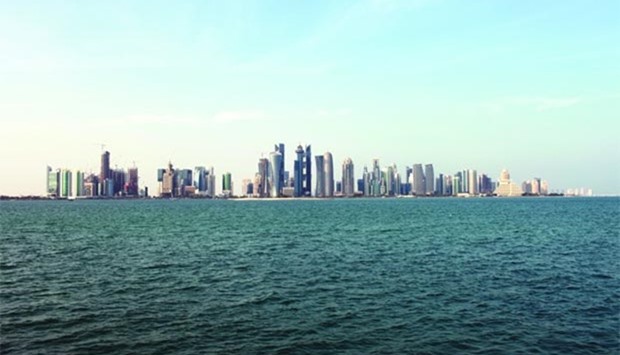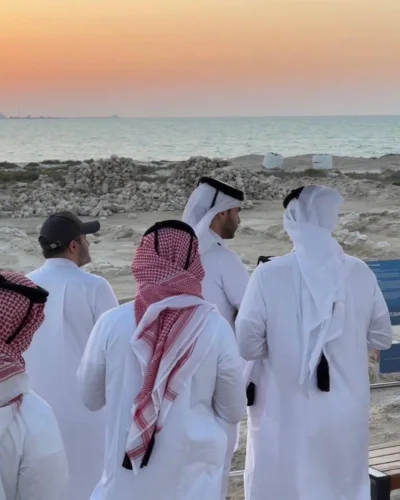The recovery in oil price and a strong expansion in non-hydrocarbons should help Qatar effectively manage the future interest rate hikes, helping the country's economic growth to pick up this year, according to a Qatar Investment Fund (QIF) report.
"The investment adviser expects Qatari economic growth to pick up in 2017, amid the recovery in oil prices and a strong growth in the non-hydrocarbon sector," said London Stock Exchange-listed QIF in its report for the fourth quarter of 2016. Its investment adviser is Qatar Insurance Company.
"This should help the economy to face the rate hike over the course of the year," said QIF, whose top 10 Qatari portfolios include QNB (19.4% of its net asset value), Industries Qatar (11.7%), Masraf Al Rayan (9.2%), Qatar Electricity and Water (7.9%), Qatar Islamic Bank (7.4%), Nakilat (6.4%), Ooredoo (5.9%), Barwa (4.9%), Gulf International Services (3.8%) and Commercial Bank (3.6%).
The US Federal Reserve hiked its benchmark interest rate for the second time in a decade by 25 basis points in December 2016 on indications that the American economy is expanding at a healthy pace and amid the then-president-elect Donald J Trump’s plans for boosting federal spending. Following which, Qatar Central Bank (QCB) had also made a similar increase in its benchmark rates.
The QIF report said Qatari banks are expected to witness higher credit growth led by upcoming projects related to the FIFA 2022 World Cup and the Qatar National Vision 2030. At the same time, banks are also expecting liquidity conditions to ease on higher government revenue due to the rise in oil prices.
QCB’s data shows that banks in the country are in "good" shape, with credit growth up 12.1% and deposits up 11.8% to the end of December 2016, said QIF, which remains overweight in the Qatar banking sector (including financial services) at 42.4% of NAV (market weighting 38.4%).
QIF said its investment adviser believes that the current positive outlook for the oil market and efficiency in current expenditure will help control the fiscal deficit. Infrastructure spending should continue to fuel non-hydrocarbon growth and attract new expatriate workers, supporting domestic consumption.
According to International Monetary Fund estimates, Qatar is expected to grow at 3.4% in 2017, which is the highest in the GCC region.
Highlighting that the improvement in oil prices (post production cut deal) is expected to raise government revenue, lower budget deficits and boost the GCC economies, the QIF report said that with Qatar successfully diversifying the economy away from the oil sector and focusing on the non-hydrocarbon sector, the impact from higher oil prices will enable it to accelerate this transition.
"The investment adviser maintains its positive outlook for the Qatari economy not only because of the improving oil price, which will increase government revenue and infrastructure spending, but also due to the strong expected growth in the non-hydrocarbon sectors," QIF said, adding Qatar would not need to consolidate and reduce its deficit any further with it targeting higher capital expenditure to stimulate the economy.
On Qatar’s 2017 budget, which is in line with the country's vision to achieve a self-sustaining economy, it said the budget is committed to reducing Qatar’s planned deficit by 38.9% due to a pickup in government revenues and continued rationalisation of current expenditure.
"This should help the economy to face the rate hike over the course of the year," said QIF, whose top 10 Qatari portfolios include QNB (19.4% of its net asset value), Industries Qatar (11.7%), Masraf Al Rayan (9.2%), Qatar Electricity and Water (7.9%), Qatar Islamic Bank (7.4%), Nakilat (6.4%), Ooredoo (5.9%), Barwa (4.9%), Gulf International Services (3.8%) and Commercial Bank (3.6%).
The US Federal Reserve hiked its benchmark interest rate for the second time in a decade by 25 basis points in December 2016 on indications that the American economy is expanding at a healthy pace and amid the then-president-elect Donald J Trump’s plans for boosting federal spending. Following which, Qatar Central Bank (QCB) had also made a similar increase in its benchmark rates.
The QIF report said Qatari banks are expected to witness higher credit growth led by upcoming projects related to the FIFA 2022 World Cup and the Qatar National Vision 2030. At the same time, banks are also expecting liquidity conditions to ease on higher government revenue due to the rise in oil prices.
QCB’s data shows that banks in the country are in "good" shape, with credit growth up 12.1% and deposits up 11.8% to the end of December 2016, said QIF, which remains overweight in the Qatar banking sector (including financial services) at 42.4% of NAV (market weighting 38.4%).
QIF said its investment adviser believes that the current positive outlook for the oil market and efficiency in current expenditure will help control the fiscal deficit. Infrastructure spending should continue to fuel non-hydrocarbon growth and attract new expatriate workers, supporting domestic consumption.
According to International Monetary Fund estimates, Qatar is expected to grow at 3.4% in 2017, which is the highest in the GCC region.
Highlighting that the improvement in oil prices (post production cut deal) is expected to raise government revenue, lower budget deficits and boost the GCC economies, the QIF report said that with Qatar successfully diversifying the economy away from the oil sector and focusing on the non-hydrocarbon sector, the impact from higher oil prices will enable it to accelerate this transition.
"The investment adviser maintains its positive outlook for the Qatari economy not only because of the improving oil price, which will increase government revenue and infrastructure spending, but also due to the strong expected growth in the non-hydrocarbon sectors," QIF said, adding Qatar would not need to consolidate and reduce its deficit any further with it targeting higher capital expenditure to stimulate the economy.
On Qatar’s 2017 budget, which is in line with the country's vision to achieve a self-sustaining economy, it said the budget is committed to reducing Qatar’s planned deficit by 38.9% due to a pickup in government revenues and continued rationalisation of current expenditure.



